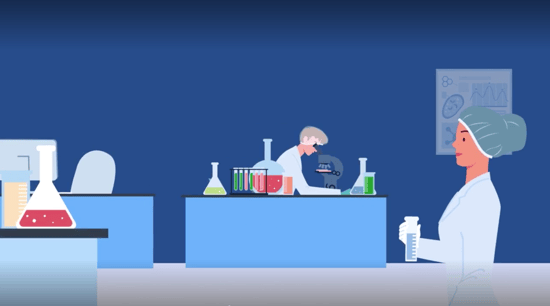Where do most contaminants found in a cleanroom come from? Human operators comprise the main contamination risk, regularly shedding over 1 billion particles per day from both skin and clothing. Particle contamination in any cleanroom can be prevented by following a standard operating procedure (SOP) for gowning, written to meet your specific cleanliness requirements.
Recurring operator training to the SOP is required to keep your controlled environment clean and compliant and ensure the processes or products meet customer requirements.
Explore and Download the Cleanroom Gowning Procedure Guide
An intentional approach by operators is fundamental
To minimize contamination, controlled environments have rigorously structured protocols that define all operator activities performed within the cleanroom. However, even before the operators arrive at the facility, there are personal hygiene requirements that operators must understand and follow.
Before reviewing the documented gowning SOP with operators, it’s critical to understand they are the single largest source of contamination, and gowning procedures and operator training are the necessary steps to avoid contaminant migration. Through consistent application and compliance with the gowning procedures, operators can make a significant positive difference in minimizing contamination.
Chances are high that if an operator skips steps or disregards necessary hygiene requirements, contaminants will infiltrate the controlled environment, leading to contaminated work areas, product failures or even a cleanroom shutdown.
Adhering to these protocols and coupled with the right mindset, operator behavior can most significantly impact cleanroom cleanliness and compliance.
Avoid Unintended Consequences with Written SOPs
While most critical environment gowning procedures follow a similar overall set of steps, your written SOPs should be specific to your cleanroom classification, workflow, and processes. The order, stages, and layout for donning and doffing cleanroom garments will be unique to these requirements.
Operator behavior and personal hygiene, which may include restrictions on the type of personal hygiene products an operator can use, should also be documented in the SOP.
These requirements may include the absence of makeup, perfume, and hair products. Personal items like jewelry, wallets, car keys, cell phones, etc. are not allowed in the cleanroom.
After gowning is complete, it’s important that operators understand they are responsible for visually checking to confirm the cleanroom apparel is donned properly. Ideally, your SOP provides operators the opportunity to correct any gowning issues before entering the cleanroom. A full-length mirror in the gowning room is essential to help operators validate they are compliant with the SOP. When donned improperly, cleanroom garments cannot be effective at trapping particles. For more in-depth information on gowning procedures, please consult our technical papers on gowning room recommended practices.
Recurring Training Protects Operators, Processes and Products
For most organizations, operator training is a natural subset of establishing written SOPs for their cleanroom and is considered a best practice. Written SOPs must leave no room for misinterpretation and require comprehensive operator training and re-training periodically.
If operators do not don and wear cleanroom garments correctly, these errors can immediately threaten cleanroom compliance and product yield.
Because operator behavior and gowning protocols directly affect cleanroom efficacy, adopting best practices for operator gowning procedures is mission-critical for controlled environments. Training the established SOP and helping cleanroom operators understand the “why” will help them develop the right mindset toward maintaining cleanliness standards.
Cleanroom operator behavior and adherence to gowning SOPs is one of the most fundamental and effective ways to ensure the integrity and continued success of your controlled environment.
Explore More Resources
IEST Recommended Practice-CC027: Personnel Practices and Procedures in Cleanrooms and Controlled Environments
ISO 14644-5:2004: Cleanrooms and associated controlled environments — Part 5: Operations

Valutek
Valutek is one of the first and few manufacturers to offer a full product portfolio of best-in-class cleanroom products. Since 1988, our controlled environment consumables are helping leading organizations operate their cleanrooms in a consistently stable state.
Related Articles
- Valutek

- 27 July 2023
Four Steps to Close the Cleanliness-Comfort Gap in Cleanroom Apparel
There are trade-offs between cleanliness and comfort when it comes to cleanroom apparel. The ...
- Valutek

- 27 March 2023
What Hidden Contaminants in Cleanroom Gloves Put Yields at Risk?
Your cleanroom gloves help to keep your controlled environment free of contaminants. Right?
How do...
- Valutek

- 21 February 2023
Cleanroom Glove Selection Fundamentals Part II: Cleanliness Requirements
Often customers ask us for a “Class 10 cleanroom glove.” The truth. It doesn’t exist.
Class 10 is...


